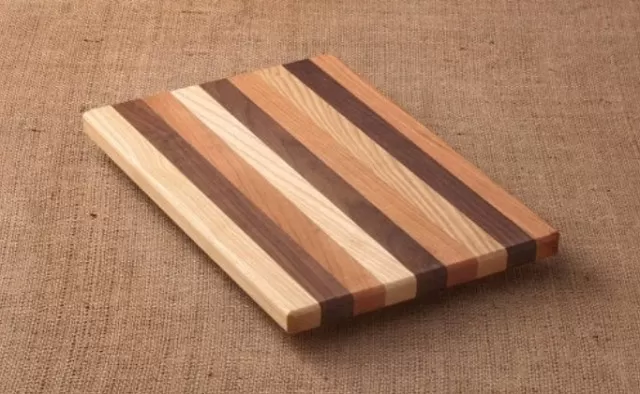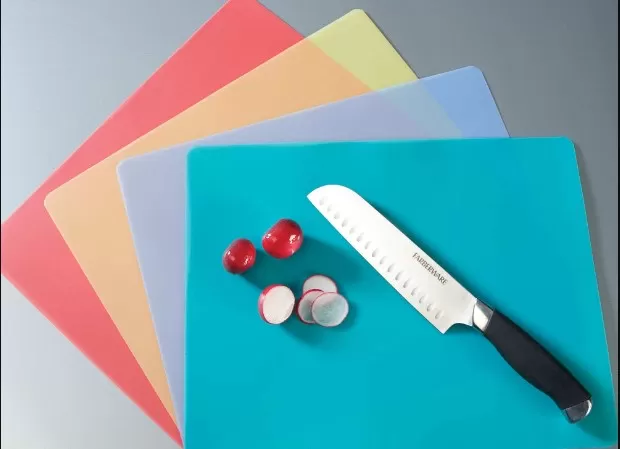Cutting boards are essential tools in the kitchen, especially when preparing delicious meals for your loved ones.
Depending on the dishes you’re making, you might have different cutting boards made from various materials.
Wood and plastic are the most popular and also considered the safest choices. Regardless of the material, it’s crucial to clean your cutting board thoroughly to prevent the growth of harmful bacteria and viruses.
Since cutting boards have porous surfaces, they can become breeding grounds for troublesome pathogens like E.
coli and salmonella, which can contaminate your food during preparation. To ensure your cutting board is spotless and free from germs and viruses, follow these steps for proper cleaning.
Best Methods for Cleaning Cutting Boards

While salt and lemons are powerful natural cleaners, other household products can be used for effective cutting board cleaning:
Bleach: Mix 2 tsp.
bleach with 1 gallon of water and soak the cutting board for 2 minutes. Rinse with warm water and let it dry.
Hydrogen Peroxide: Wipe down the cutting board on each side with a paper towel soaked in hydrogen peroxide.
Let it stand for a few minutes before rinsing it with warm water.
White Vinegar: Apply distilled white vinegar to the cutting board and wipe it down.
To remove odors, sprinkle baking soda over the board, then spray it with vinegar. Allow the mixture to work for a few minutes before rinsing with cold water.
By following these cleaning methods, you can maintain a clean and hygienic cutting board, ensuring a safe and healthy cooking environment in your kitchen.
How to Clean Plastic Cutting Boards

Plastic cutting boards are affordable and easy to clean, making it convenient to have multiple colors or designs for different purposes, reducing the risk of cross-contamination in the kitchen.
To clean a plastic cutting board, follow these steps:
Apply Paste to Cutting Board: Mix baking soda, salt, and water in a small bowl to form a paste.
Apply the paste to one side of the board using a spoon.
Scrub Cutting Board: Use a bristle brush or toothbrush to scrub the surface of the plastic cutting board.
Rinse with warm water, flip over, and repeat.
Rinse and Dry: Rinse the board with warm water and dry it with a clean cloth.
Alternatively, if you have a dishwasher, you can skip steps 1-4 and place the plastic cutting board in the dishwasher for effective sanitization.
How to Clean Wood Cutting Boards

Next time you go grocery shopping, keep a few lemons aside.
Combined with salt and baking soda, lemons possess strong cleaning properties that go beyond the surface. The acidic juice of lemons acts as a natural antibacterial agent, while salt’s abrasive quality helps to scrub the cutting board effectively.
Baking soda, on the other hand, acts as a gentle abrasive, brightens the surface, and acts as a natural deodorizer, eliminating lingering food odors.
To clean your wood-cutting board, follow these steps:
Salt the Cutting Board: Place the wood cutting board in the sink and generously sprinkle coarse salt across the surface.
Scrub the Cutting Board with Lemon: Cut a lemon in half and squeeze the juice from one half onto the salt.
Use the lemon half to scrub the board, repeating the process on the other side. Allow the cutting board to sit for five minutes before rinsing off the lemon and salt.
Rinse the Cutting Board: Rinse both sides of the cutting board with warm water using a sponge or cloth.
Treat Heavy Stains: For stubborn stains, sprinkle baking soda on the cutting board and use a bristle brush or toothbrush to scrub.
Repeat on the other side.
Rinse and Dry: Rinse the board again with warm water and a sponge, then thoroughly dry it with a clean towel.
Oil the Cutting Board: If you have an end-grain cutting board, oil it once it has dried completely.
This activates the “self-healing” properties of the board, restoring its fibers to their natural condition. Edge-grain cutting boards should also be oiled regularly, while face-grain boards do not require oiling for maintenance.
*The information is for reference only.